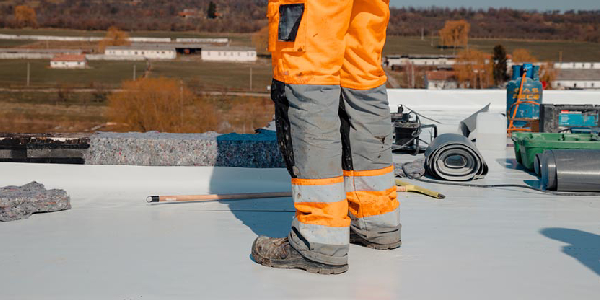Why Millions Choose Modified Bitumen Over Other Roofing Materials

By Polyglass.
How modified bitumen went from an experimental innovation to one of the most common commercial roofing systems in the industry.
Since modified bitumen's origins over 50 years ago, it quickly became a go-to roofing material for many commercial roofing materials. Modified bitumen has many benefits, including tensile strength, durability and simple installation all of which has increased its appeal among building owners and contractors alike. But what is modified bitumen roofing? And why has it become one of the most popular choices worldwide?
Let’s do a deep dive into this topic, discussing what modified bitumen roofing is, how it came about and the different types of modified bitumen. This way you can make an informed decision about whether modified bitumen is right for your roof.
What is modified bitumen roofing?
Modified bitumen is thought of as the evolutionary cousin of the built-up roofing systems (BUR) that have been used on low-slope roofs for more than 100 years. It is made of asphalt combined with polymerized rubber or plastic, then reinforced with fiberglass to create a rugged-yet-flexible waterproof membrane.
Modified bitumen roofing is primarily used on flat or low-slope commercial roofs. Depending on the type and material, these membranes may be installed as part of a two-layer system or as part of a multi-ply system.
History of modified bitumen
Modified bitumen first appeared in commercial roofing in the mid-1960s in Europe. Before that time, the conventional roofing system used on most commercial structures was built-up roofing (BUR), a complicated system of alternating layers of asphalt and fabric with a top layer of gravel. While BUR was a tried-and-true method, it was heavy, costly to install, difficult to repair and often had trouble holding up against extreme temperatures. By integrating the bitumen with polymers and fiberglass into a simple membrane, the developers of modified bitumen hoped to simplify the roofing process while resolving some of the most common issues with BUR.
Overall, the efforts were successful. Modified bitumen proved to be easier to install while providing enhanced protection compared to BUR systems, even in very cold temperatures. By 1975, modified bitumen was in wide use here in the United States, and today, it has all but replaced BUR as one of the most reliable roofing materials on the market.
Application methods for modified bitumen
Modified bitumen typically comes in membrane form, in rolls that are installed directly onto the substrate via an adhesive. The material may be heat welded, cold-adhered or, in some cases, self-adhered (as with many of Polyglass’ top products that feature ADESO® self-adhering technology). Some modified bitumen membranes may also be mechanically attached. Most applications call for at least two layers (a base layer and a cap layer), but in some cases, it may be installed in a multi-ply system of three or more layers.
Modified bitumen membrane types
Modified bitumen typically falls into one of two varieties: APP and SBS.
APP membranes
Commonly nicknamed “plastic asphalt,” atactic polypropylene (APP) membranes consist of asphalt blended with plasticized polymers that become elastic under high temperatures. APP is resistant to UV rays and is a good choice for building owners seeking a “cool roof” effect.
SBS membranes
SBS stands for styrene-butadiene-styrene, but it helps to think of SBS roofing as “elastic” or “rubberized” asphalt. This membrane combines asphalt with polymerized rubber for natural flexibility and elasticity. SBS is a good choice for buildings whose roofs expand and contract with extreme temperature changes, as well as roofs subject to higher winds.
Benefits of modified bitumen roofing
-
Tear-resistance. Modified bitumen offers outstanding durability and tensile strength, making it resistant to tears from weathering, debris and even consistent foot traffic.
-
Waterproof. When properly installed, modified bitumen provides some of the best waterproofing protection of any roofing material on the market. Redundant layers enhance this quality even further.
-
Ease of installation, repair and maintenance. Modified bitumen is easy to maintain, and if it does tear or leak, it can be easily patched.
-
Flexibility. Modified bitumen expands and contracts with changing weather conditions without losing integrity.
-
Energy-efficient. Certain types of modified bitumen offer high UV resistance and reflect the sun’s rays for lower energy bills.
Have a question? AskARoofer.
Find your local roofing contractor in the RoofersCoffeeShop® Contractor Directory.
Original article source: Polyglass










Comments
Leave a Reply
Have an account? Login to leave a comment!
Sign In